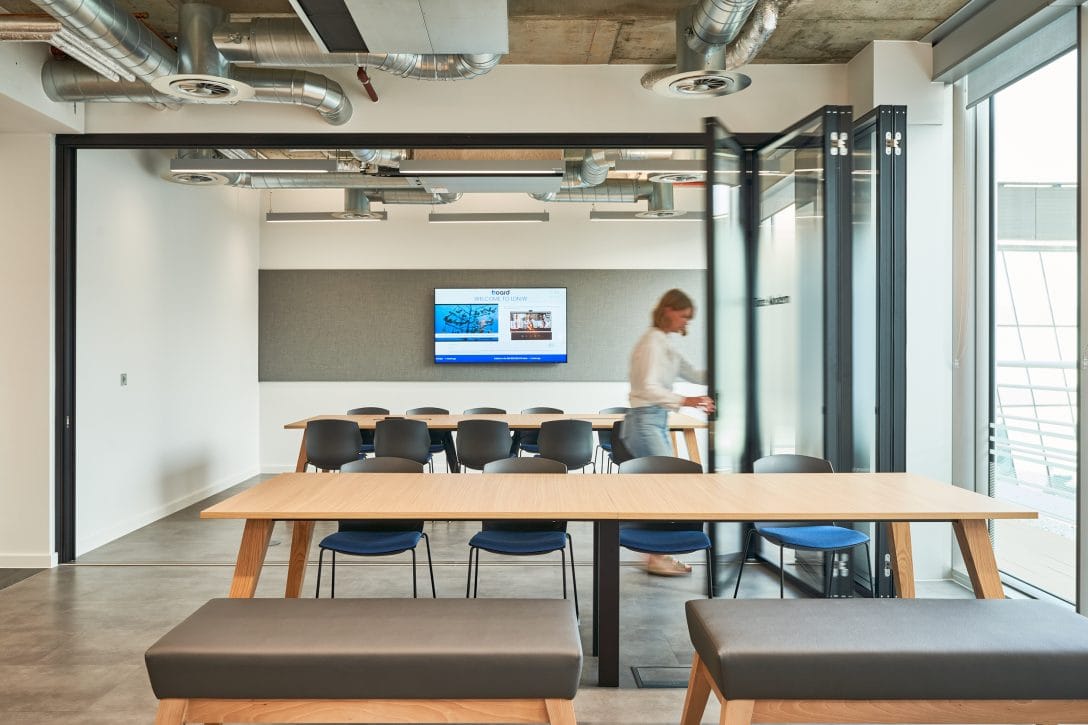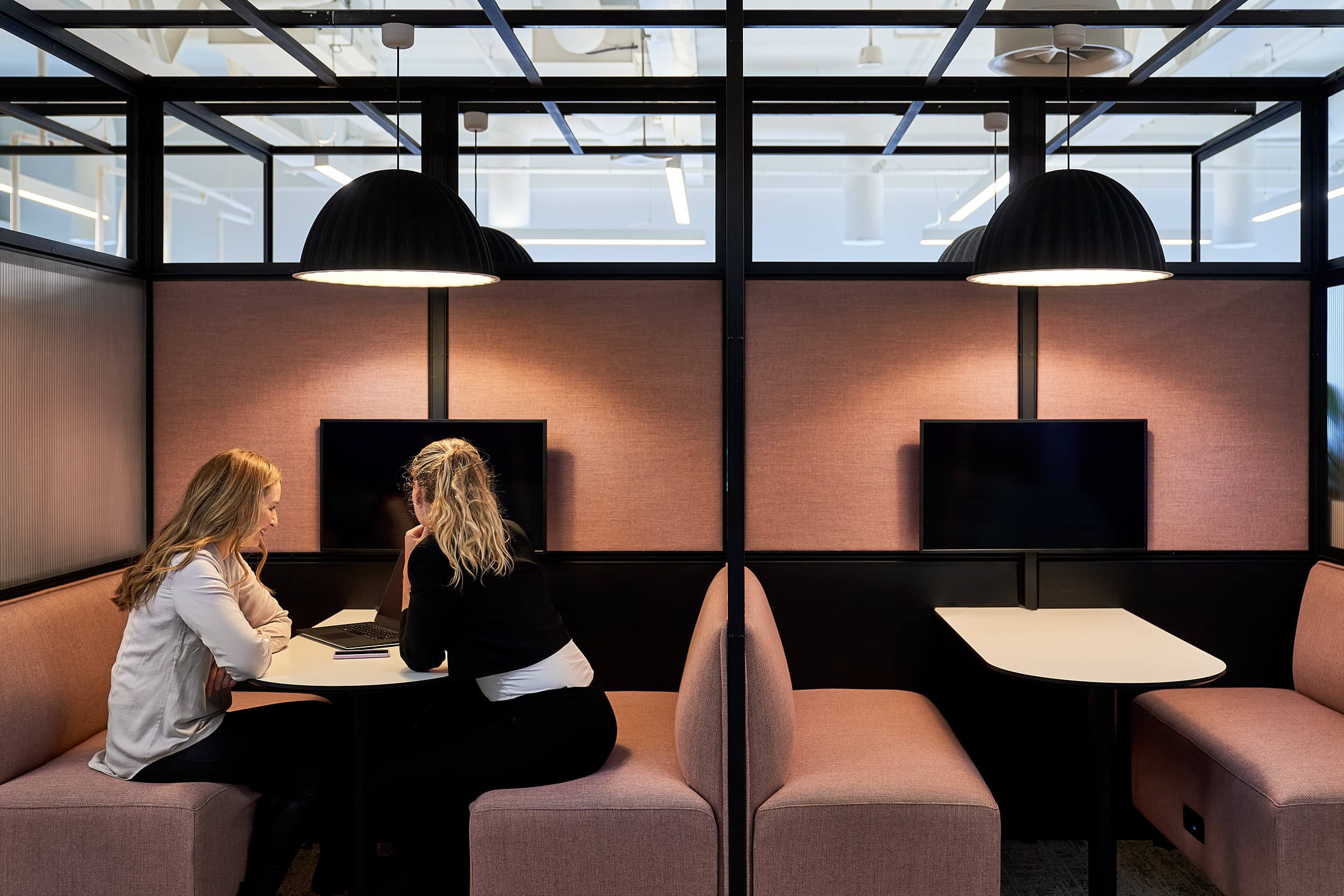5 strategies for effective hybrid workplace design
Our top tips for creating effective workplaces that cater to hybrid workers.
In this blog, we explore five strategies for effective hybrid workplace design, delving into global insights and crafting solutions that empower individuals and organisations to flourish amid the dynamic changes in the way we work.
Embarking on the ever-evolving journey of the modern work landscape prompts us to rethink our approach to workspaces. The shift towards hybrid models challenges us to seamlessly blend traditional office elements with the flexibility demanded by the current era.
In a world where employees spend less time in the office, the question arises: How can physical spaces not only adapt but also thrive, fostering collaboration, well-being and productivity?
Our exploration aims to bridge the gap between remote work and traditional office-based models, intensifying the pursuit of a cohesive and successful hybrid work environment.
1. Create agile workplaces
The first step in navigating the future of office design is understanding the multifaceted nature of hybrid work. Hybrid work models, characterised by a blend of in-office and remote work, demand spaces that can flexibly cater to diverse tasks and activities.
From collaborative brainstorming sessions to focused individual work, the modern workspace needs to be versatile enough to support it all. This calls for agile environments that can be easily reconfigured to meet shifting demands, ensuring that employees have access to spaces that empower their tasks, regardless of location.
“Designing for agility in today’s evolving work landscape is about more than just accommodating remote work. It’s about creating spaces that seamlessly adapt to the dynamic nature of hybrid work models. From collaborative huddles to solo brainstorming, our approach focuses on crafting environments that effortlessly transform to meet the diverse needs of modern professionals. This journey of creating agile environments is a commitment to ensuring that the workspace empowers every task, fostering productivity and innovation, no matter where work takes place.”
Simon Hart, AIS Head of Creative Design

2. Designing for seamless transitions
A cornerstone of effective hybrid workspaces is the ability to seamlessly transition between in-person and remote collaboration. The office must become a bridge that connects teams, whether they are physically present or connecting virtually.
Incorporating advanced audio-visual solutions, video conferencing technology and intuitive room booking systems can facilitate frictionless interactions, ensuring that remote team members feel as engaged and included as their in-office counterparts.
3. Prioritise well-being and balance
As work transcends the traditional boundaries of the office, the importance of employee well-being becomes paramount. Effective office design must embrace this shift by creating spaces that prioritise comfort, health and mental well-being.
This can range from ergonomic furniture and designated relaxation areas to biophilic design elements that connect employees with nature, even while indoors. Nurturing a sense of balance and belonging can foster a positive work environment that contributes to overall productivity and job satisfaction.
4. Foster social connections through office design
To enhance the attractiveness of in person attendance to your hybrid workplace, organisations can design spaces that encourage socialisation and networking among hybrid employees.
Implementing open layouts, flexible seating arrangements and common areas with amenities like coffee stations fosters spontaneous interactions and teamwork. Integrating technology for communication, multifunctional event spaces and well-designed cafeteria or kitchen areas further enhances social opportunities.
5. Technology integration for efficiency
AIS recognises that the future of office design globally is intrinsically linked to technology integration. Leveraging smart building systems and IoT (devices, workspaces can be fine-tuned to respond to employee needs in real time. Automated lighting, climate control and space occupancy sensors can optimise energy consumption while tailoring the environment to individual preferences. By creating technologically intelligent environments, offices can achieve efficiency and comfort in tandem.
From creating agile environments that cater to diverse tasks to prioritising employee well-being and fostering social connections, our approach is centered on empowering individuals and organisations to thrive in the evolving era of work.
To embark on this journey of transformation and make design changes tailored to your workplace’s unique needs, we invite you to connect with a member of our design team.


